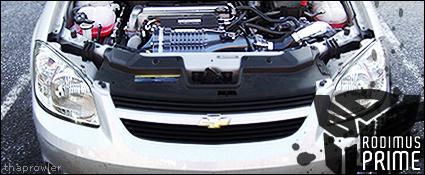Is this Nology Power Core Coil Amplifier worth getting for my 2.4l cavalier.

saves gas and little bit quicker to get your upper rpms...
other than thats... its good to save gas!!!

junk
MSD
go big or go home

1989 Turbo Trans Am #82, 2007 Cobalt SS G85
^^^^^^^^^^^^^^ JBO Radio? What's the range and station?


I'll vouch that the wires are pure garbage. Just glad they come with a lifetime warrenty through summit racing, and I got MSD wires instead along with a refund check.

The nology does have the capacitive wires like you say but it doesn't hold the charge until the coil is finished firing. It does delay the spark a little as the nature of anything additional in the line of the spark, however a capacitor stores charge, but how much is the question. It only delays the spark for as long as it takes to charge the capacitor, which is dependant upon the RPM of the motor so whats really happening is as the motors rpms increase the spark retard gets larger since the charge time is a fixed constant. However even if the capacitor was 300 micro farads which is large for a wire loom capacitor, the delay would be in the range of hundredths of a second at a dead short which is basically how an ignition system works, repeated dead shorts followed by a collapsing magnetic field.
Yes, it is still a piece of crap bottom line.









